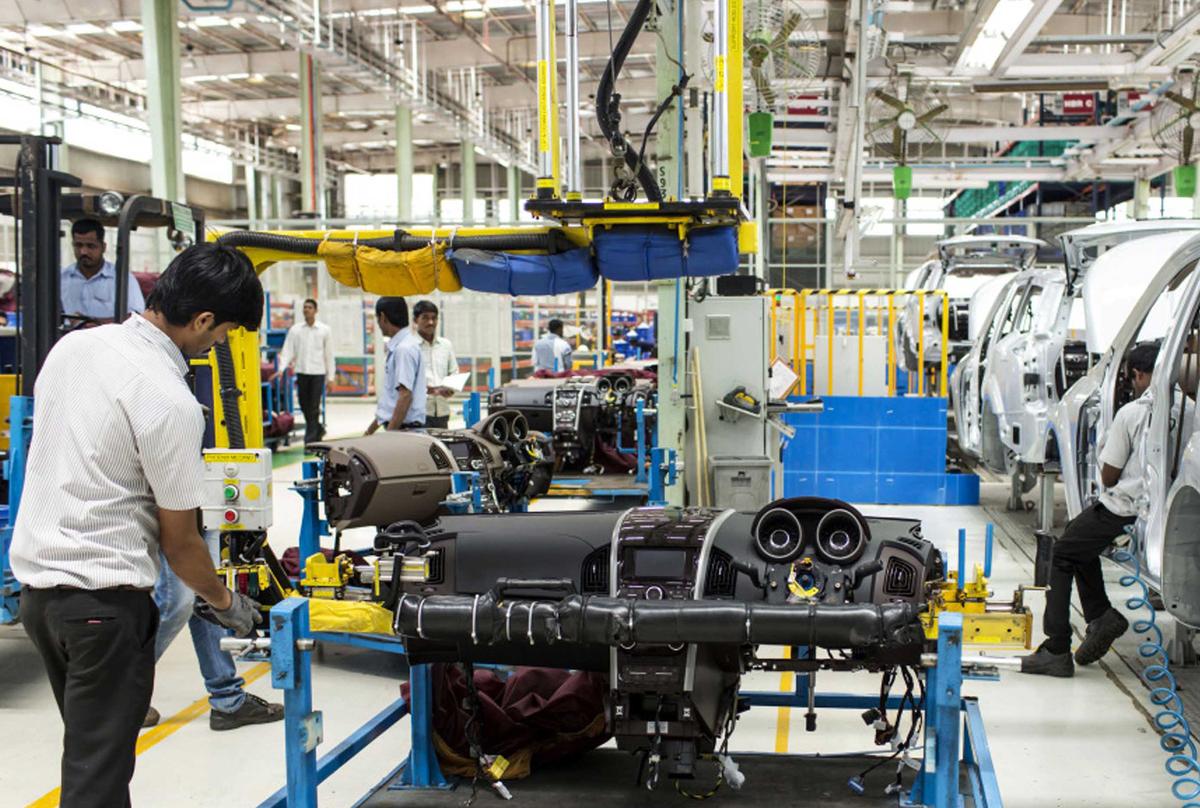The Return of Manufacturing Jobs to India: A Reality Check
India’s ambition to become a global manufacturing hub has taken center stage in recent years. With favorable government policies, geopolitical realignments, and a rising focus on supply chain diversification, many global firms are “China Plus One” strategizing — and India is emerging as a key alternative. But are manufacturing jobs really returning to India? Or is this just another overhyped narrative?
This blog presents a reality check on India’s manufacturing job landscape — exploring growth, bottlenecks, reforms, and the actual ground-level impact on employment.
Why Manufacturing Matters to India
Manufacturing is crucial for India’s long-term economic ambitions:
-
Generates employment at scale, especially for semi-skilled and unskilled workers.
-
Drives exports and reduces trade deficits.
-
Catalyzes industrialization and infrastructure development.
-
Supports the government’s $5 trillion economy goal by 2027–28.
India aims to raise the share of manufacturing in its GDP to 25% from the current 16.5%, per World Bank Data.
What’s Driving the Return of Manufacturing to India?
1. Global Realignment Post-COVID & China Tensions
The pandemic, followed by rising U.S.-China tensions, forced companies to reconfigure their supply chains. India, with its large workforce, low labor costs, and democratic framework, is a natural alternative.
Apple, for instance, is now assembling 7% of its iPhones in India, with partners like Foxconn expanding facilities in Tamil Nadu and Karnataka (Bloomberg).
2. PLI Schemes (Production-Linked Incentives)
The Indian government launched PLI schemes worth over ₹2 lakh crore across 14 sectors — including electronics, textiles, pharmaceuticals, and semiconductors.
These schemes provide incentives for companies based on incremental output, helping attract both domestic and foreign investors.
Read more: https://www.investindia.gov.in/production-linked-incentives-schemes
3. Make in India + Digital India + Skill India
Together, these flagship schemes aim to:
-
Ease business setup processes
-
Digitize compliance and production tracking
-
Upskill millions of workers for the new industrial economy
Where Are the Jobs Coming Back?
The rise in manufacturing employment is sector-specific rather than broad-based. Here are some sectors seeing notable job growth:
a) Electronics & Semiconductors
India’s electronics manufacturing industry grew 2.5x between 2017 and 2023, led by firms like Samsung, Dixon Technologies, and Foxconn.
According to MeitY, this sector could create 10 lakh jobs in the next five years, fueled by mobile assembly, display units, and component manufacturing.
b) Textiles & Apparel
Textile parks under the PM MITRA scheme are being established across multiple states to revive India’s labor-intensive garment sector.
India’s textile exports are expected to hit $100 billion by 2030, with millions of jobs expected in clusters like Surat, Tiruppur, and Panipat.
Read more: https://www.texmin.nic.in/
c) Auto & EV Components
Global auto giants like Hyundai, Suzuki, and Tesla (in talks) are exploring India for electric vehicle production. Tata Motors and Mahindra are also expanding EV manufacturing, generating jobs in hubs like Pune and Chennai.
The Reality Check: Key Challenges to Watch
1. Jobless Growth?
While manufacturing output has grown, employment elasticity is low. Many investments are in automation-heavy units that require fewer workers.
Example: Foxconn’s India iPhone facility may employ only 10,000–20,000 workers, despite billions in investment.
2. Skill Mismatch
A CMIE report shows a significant mismatch between the industry’s needs and the skill levels of new entrants. Vocational education penetration remains low.
Even with Skill India programs, employers frequently report a lack of “employable” talent.
3. Infrastructure & Logistics Bottlenecks
Though improving, India’s logistics costs (13-14% of GDP) are higher than China’s (8%). Poor last-mile connectivity, high power tariffs, and regulatory red tape still impact factory performance.
See more: National Logistics Policy
4. Contractual & Informal Labor
Most new manufacturing jobs are contractual or informal, lacking job security or social benefits. This trend doesn’t contribute to long-term employment sustainability.
State-Level Disparities
Manufacturing job creation is concentrated in:
-
Tamil Nadu – Electronics, auto, garments
-
Gujarat – Textiles, chemicals, pharma
-
Karnataka – Electronics, aerospace
-
Maharashtra – Auto, defense, logistics
Meanwhile, Bihar, UP, and Odisha still struggle to attract serious manufacturing employment due to poor infrastructure and governance issues.
Foreign Firms & Indian Agent Ecosystem
For global manufacturers, tapping into India’s market requires more than just infrastructure — it needs reliable local partnerships.
Indian business agents assist foreign firms in:
-
Land acquisition & legal compliance
-
Navigating labor laws
-
Supply chain setup
-
Hiring and training workforce
Platforms like India-Agent.com connect foreign companies with vetted, local agents to ensure smoother market entry and labor management.
What Needs to Be Done?
To truly revive manufacturing employment, India must:
-
Enhance skilling with greater industry-academia collaboration
-
Incentivize labor-intensive sectors
-
Ensure better labor law implementation (post labor code reforms)
-
Invest in logistics corridors and smart manufacturing zones
-
Promote value-added exports, not just assembly
Conclusion: A Balanced Outlook
Yes, manufacturing jobs are returning to India — but not at the scale or inclusivity the country needs yet.
The focus on electronics, EVs, and high-tech sectors is encouraging, but India must also revive traditional sectors that offer mass employment. Manufacturing can be India’s golden ticket, but only if growth is inclusive, geographically balanced, and skill-aligned.
With continued policy support, strong private-public partnerships, and a digital-first approach to labor and compliance, India’s return as a global factory floor might indeed become reality — not just rhetoric.
